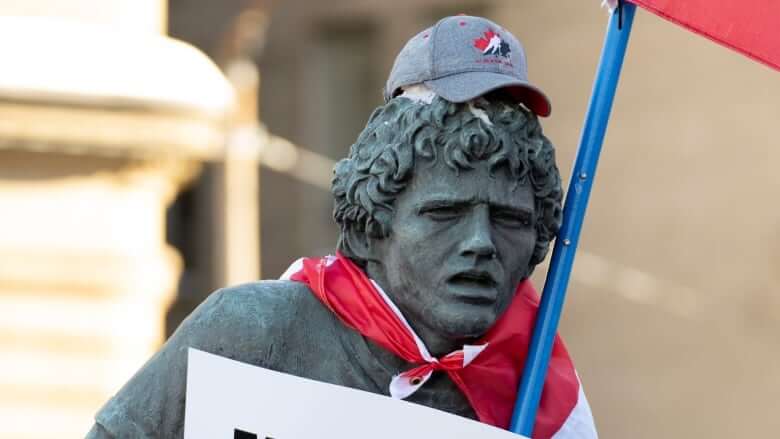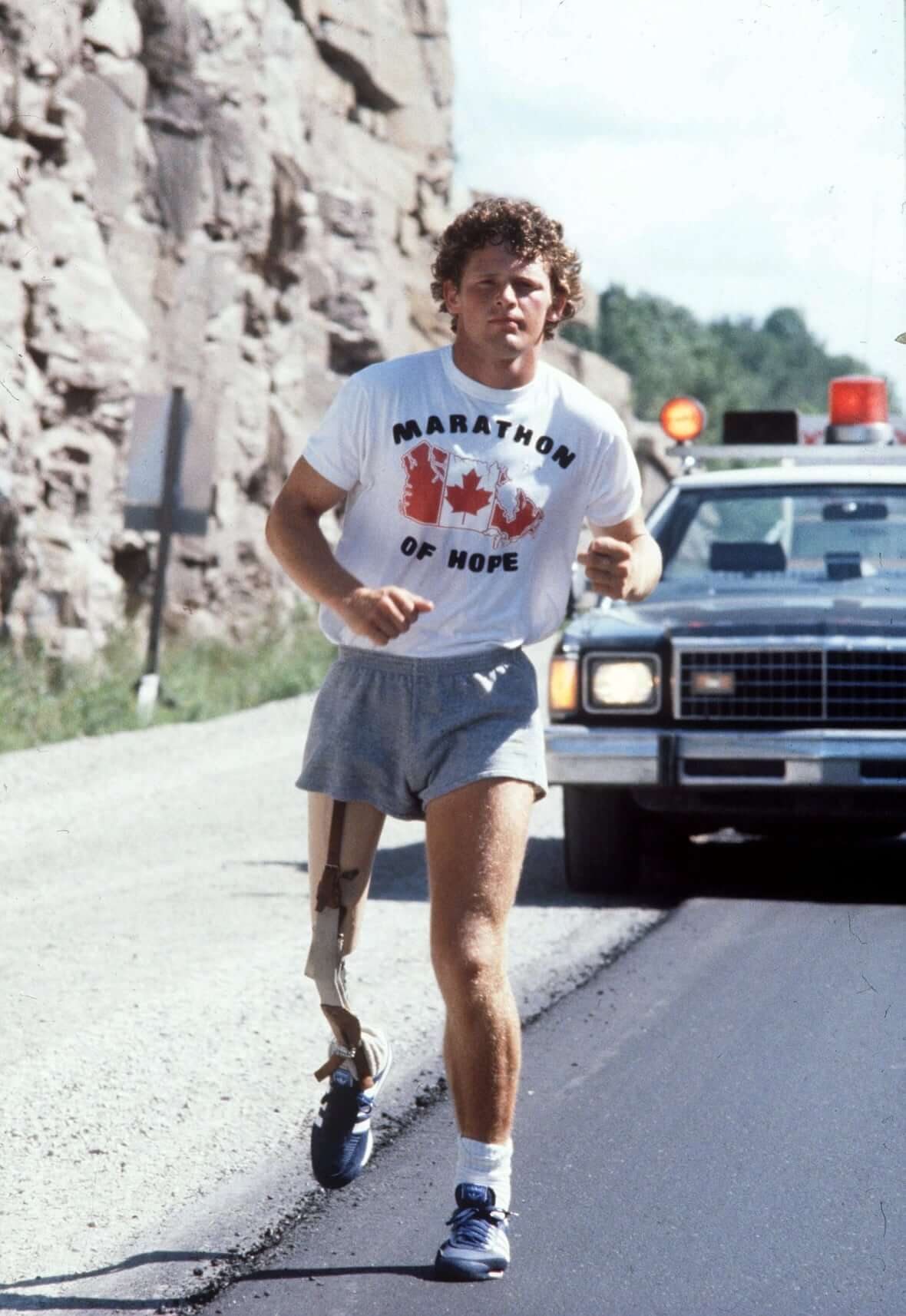Anger over defacement of Terry Fox statue a sign of his ‘unique’ legacy, says mayor of icon’s hometown

The outpouring of condemnation over the defacement of a Terry Fox statue across from Parliament Hill in Ottawa this past weekend is a stark reminder of the “unique” legacy of the Canadian icon and shows just how revered Fox is more than 40 years after his Marathon of Hope and his untimely death at age 22, say some who have commented on the events.
“Terry Fox is probably one of the most unique figures in Canadian history in terms of his ability to unite people,” said Brad West, the mayor of Fox’s hometown of Port Coquitlam, B.C.
“The way that he unites people in this country is probably unmatched.”
The statue was defaced after protesters opposed to vaccine-mandates and other public health measures to contain the spread of the coronavirus converged on Parliament Hill over the weekend.
The figure was draped with a hockey cap on its head, a Canadian flag wrapped around its neck, an upside down Canadian flag hanging from its arm and a placard reading “Mandate Freedom” wedged under another arm.
People have taken to social media to express their outrage over what happened, and it has prompted some Canadians to say they are pledging money to the Terry Fox Foundation.
A spokeswoman for the Terry Fox Research Institute, the research arm of the Terry Fox Foundation, said it wouldn’t comment on what occurred to the statue or how much more money had been raised in donations as a result.
The Terry Fox Foundation did not respond to inquiries, but on the weekend, it tweeted that “Terry believed in science and gave his life to help others.”
Fox ‘above politics’
Police in Ottawa are investigating the defacement of the statue, along with allegations that protesters desecrated the Tomb of the Unknown Soldier at the National War Memorial by dancing on it during the protest.
West said Fox’s legacy is revealed every year when millions of Canadians with different political beliefs and backgrounds all come together to participate in Terry Fox runs.
“What it’s about is a belief that Terry Fox is above politics,” West said. “People in this country can and should voice their opinion on different issues. But what they shouldn’t do is try and use Terry Fox to make a political statement.”
Darren Wark, one of Fox’s cousins, who is a volunteer with the Terry Fox Foundation and one of the organizers of the Terry Fox Run in Victoria, B.C., said he would have thought that defacing a Fox statue was one of the lines you don’t cross.
“As Canadians, we identify with certain things that are Canada: Rocky Mountains, the Great Lakes, the oceans. And you know, Terry is included in those great things that make up Canada,” he said.
Fox was diagnosed with bone cancer at the age of 18 and had his right leg amputated above his knee in 1977. Running with his artificial leg, he became an iconic figure when he launched his Marathon of Hope in 1980, an epic cross-country trek to raise money for cancer research.

But his cancer forced him to cut his run short and he died the next year, at the age of 22. His actions led to the creation of the annual Terry Fox Run, The Terry Fox Foundation and the Terry Fox Research Institute, all in support of cancer research.
Fox’s name can be found in a variety of places across the country, including schools and streets, a mountain peak in British Columbia as well as hiking trails, parks and monuments.
‘Not a Canadian move’
The bronze statue of Fox near Parliament Hill was commissioned by the regional municipality of Ottawa Carleton in 1983 and sculpted by John Hooper, who saw Fox run when the Marathon of Hope passed through New Brunswick.
Wark said he felt a range of emotions when he saw the images of the defaced statue.
“My first was disappointment. And then I kind of had some anger and then I realized that, you know what? This is not the first time,” he said.
Wark felt the protesters were trying to appropriate Fox’s image, and that it reminded him of how others tried to latch on to Fox when he began his Marathon of Hope.
“They would try and run with him, with their logos, their corporate logos. And Terry didn’t wear a logo because he didn’t want people to be able to take over and make it not about cancer research.”
Rob Reid, the chair of the Terry Fox Centre who helped erect a similar statue in Victoria, said “defacing a Canadian icon is surely not a Canadian move. I don’t think it was going to garner [the protesters] any support for what they’re doing.”
Wark said at least some may good may come from the episode if it’s inspiring to Canadians to donate to cancer research.
“I’m sorry it had to happen the way it did in Ottawa. It’s unfortunate, but you know what? I guess we can turn it into a positive in some way.”








Redes Sociais - Comentários